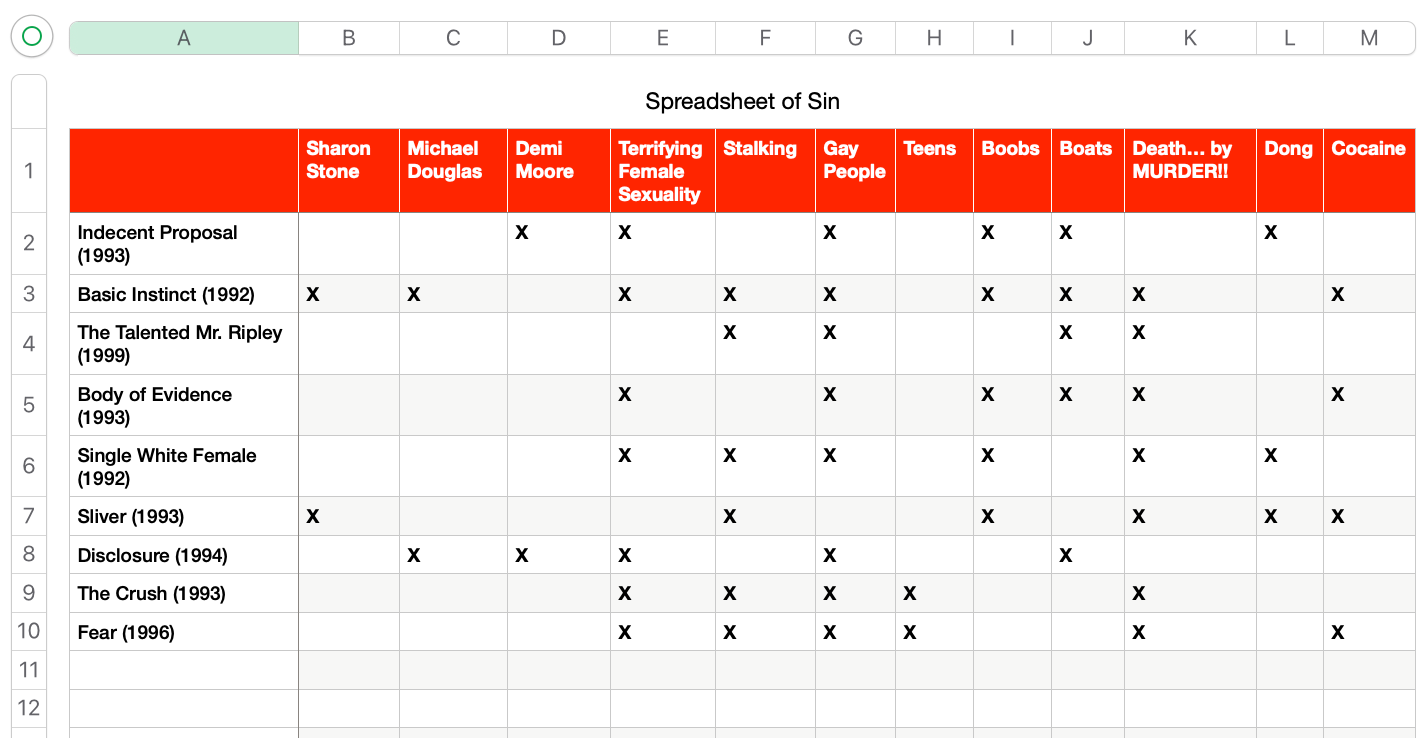Rollercoaster of Love: Fear (James Foley, 1996)
Good evening, and welcome to Dadsterpiece Theater.

Picture it: The month is April; the year, 1996. A young Jude Doyle wanders the halls of Blendon Middle School, with a glimmer in his eye and a Goo Goo Dolls song in his heart. This is eighth grade, the threshold to adulthood, and everywhere he goes, the halls of the school hum with one electric phrase: Fingered her on the roller coaster.
I can definitely remember hearing about thrillers like Basic Instinct or Disclosure or Indecent Proposal, but they were made for adults, who had marriages to break up and jobs to lose. Fear is the first movie I can remember kids my age watching. The erotic thriller as a whole underwent heavy teen-ification in the mid-90s. For the first half of the decade, the genre was almost exclusively framed through the viewpoints of white cishet Boomer men, with a few neurotic career women thrown in for balance. Yet by the end of the decade, we’re seeing erotic thrillers with all-teen casts — your Swimfans, your Cruel Intentionses — and this continues today with shows like Euphoria, whose claim to edginess arises from the supposedly scandalous fact that the characters doing drugs and having sex are underage.
Fear, I posit, is the moment where the balance shifted. The movie tries to follow the genre formula, by centering itself on the anxieties of a baggy, saggy, middle-aged white Dad. Yet the anxieties of said Dad center entirely on his daughter, who is getting old enough to date and who finds herself (like many girls her age) in an abusive relationship. Everything that happens is happening to her — all Dad does is worry that it might happen, which it does. The daughter is played by Reese Witherspoon. The Dad is played by some guy who's made a couple dozen CSI episodes. You tell me where you think the audience is focusing their attention.

On some level, Fear was just following the market. Teenage girls were big business in 1996: Alicia Silverstone broke out of the jailbait-thriller basement a year earlier, with Clueless, which was a big hit. Scream and The Craft kickstarted the teen-horror renaissance — to which Fear arguably belongs — in this same year. A year later, in 1997, Buffy the Vampire Slayer would debut on television (and would go on to cop its entire Angelus plot line from Fear, right down to the “Wild Horses” needle drop) and teen girls would make Titanic the most profitable movie in history. Fear arrived in the movie theater about three months before the Spice Girls’ “Wannabe” arrived on radio stations. The era of mass-market Girl Power had begun.
But Fear is also a decidedly transitional document. It wants teen eyeballs, but it doesn’t yet know how to pitch itself directly to that crowd. Dad is still there, hanging off the plot like a vestigial organ or a third nipple, and most of the plot still exists to confirm his supreme importance and tell him that he’s right about everything — which, according to Gore-Geous author and Faculty of Horror co-host Alex West (the field’s leading expert on terrible things happening to teenagers in the 1990s) was the point.